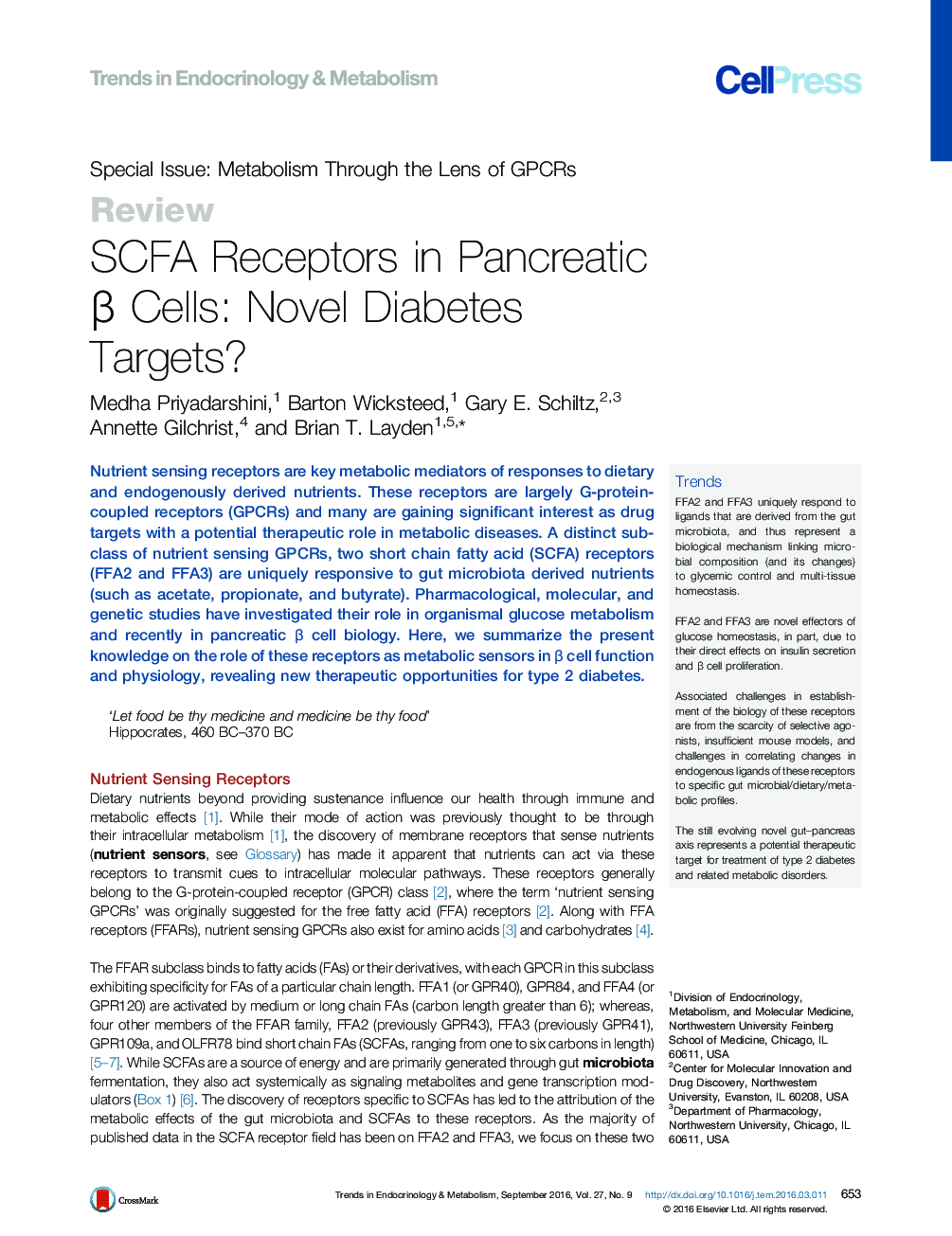| Article ID | Journal | Published Year | Pages | File Type |
|---|---|---|---|---|
| 2810057 | Trends in Endocrinology & Metabolism | 2016 | 12 Pages |
Nutrient sensing receptors are key metabolic mediators of responses to dietary and endogenously derived nutrients. These receptors are largely G-protein-coupled receptors (GPCRs) and many are gaining significant interest as drug targets with a potential therapeutic role in metabolic diseases. A distinct subclass of nutrient sensing GPCRs, two short chain fatty acid (SCFA) receptors (FFA2 and FFA3) are uniquely responsive to gut microbiota derived nutrients (such as acetate, propionate, and butyrate). Pharmacological, molecular, and genetic studies have investigated their role in organismal glucose metabolism and recently in pancreatic β cell biology. Here, we summarize the present knowledge on the role of these receptors as metabolic sensors in β cell function and physiology, revealing new therapeutic opportunities for type 2 diabetes.
TrendsFFA2 and FFA3 uniquely respond to ligands that are derived from the gut microbiota, and thus represent a biological mechanism linking microbial composition (and its changes) to glycemic control and multi-tissue homeostasis.FFA2 and FFA3 are novel effectors of glucose homeostasis, in part, due to their direct effects on insulin secretion and β cell proliferation.Associated challenges in establishment of the biology of these receptors are from the scarcity of selective agonists, insufficient mouse models, and challenges in correlating changes in endogenous ligands of these receptors to specific gut microbial/dietary/metabolic profiles.The still evolving novel gut–pancreas axis represents a potential therapeutic target for treatment of type 2 diabetes and related metabolic disorders.
